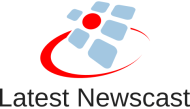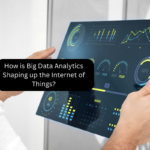How is Big Data Analytics Shaping up the Internet of Things?
The two greatest drivers of change in the world of technology are Big Data Analytics and the Internet of Things (IoT). The Internet of Things links everything from everyday devices to information transmission while Big Data Analytics accumulates information and analyzes it. These technologies are changing industries, making real-time decision-making possible, predictive analytics accurate, and better UX, and the list goes on.
This blog looks at the relationship between Big Data Analytics and IoT and how they are changing the paradigm of innovation and efficiency.
Before talking about the connection between the two, let’s take a closer look at what IoT and Big Data Analytics mean.
Internet of Things (IoT)
The Internet of Things is a network of machines that communicate and exchange data. Such devices range from consumer products like smartwatches, lights, cars, refrigerators, and thermostats to complex industrial machinery. The main function of IoT is to let these gadgets connect, collect, and exchange information to increase efficiency and provide useful information.
Big Data Analytics
Big Data Analytics is the extraction of patterns, trends, and insights from vast volumes of structured or unstructured data. Such data usually comes from a variety of sources, including social media sites, sensors, and other digital services. The purpose of Big Data Analytics is to discover useful, interesting information that can promote accurate decisions, minimize risks, and boost innovation.
How are IoT and Big Data Beneficial Together?
Now, let’s understand exactly why Big Data Analytics is important for the development of the Internet of Things:
Data collection and aggregation
The IoT’s heart is data collection and transmission. If used properly, this information becomes an information warehouse. The big data revolution enables the collection and analysis of data from IoT devices.
But this data must be sifted by Big Data Analytics for insights and improvements like improving traffic flow, predicting whether or not there will be a parking space available, and monitoring pollution levels. It transforms raw data into usable intelligence, making cities more effective and responsive.
Real-time decision-making
Being able to make real-time decisions is one of the most important strengths of integrating Big Data Analytics with IoT. Traditional analytics may take hours or even days to process data; with Big Data Analytics, decisions can be made on the fly.
For example, in manufacturing, IoT sensors mounted on machinery can be used to monitor performance in real-time. Big Data Analytics can process this data immediately to predict equipment failures before they even happen. Such a predictive maintenance plan helps reduce downtime, saving both time and resources.
Predictive analytics for improved efficiency
Big Data has brought predictive analytics to the table for the IoT. Using historical data and trends, it can forecast future outcomes and trends. In terms of the IoT, this means forecasting equipment failures, optimizing energy consumption, and even predicting consumer behavior or making way for innovations.
In agriculture, for instance, IoT devices like smart sensors in the field gather data on soil moisture, temperature, and crop health. After that, Big Data Analytics can predict the best time for irrigation. Water use can thus be limited and crop yields optimized.
Enhanced security and anomaly detection
The more devices that are connected, the greater the potential for cybersecurity threats. Big Data Analytics will detect unusual patterns or anomalies in the data, which could indicate a security breach. By keeping an eye on the IoT data streams round-the-clock, it can quickly spot suspicious activities, giving IoT ecosystems overall greater security.
Customized user experiences
The marriage of Big Data and IoT also helps personalize user experiences. Take wearable devices that monitor health indicators, for instance. Big Data Analytics can analyze the data these devices produce to give personalized health advice and insights. Customization at this level increases both user engagement and satisfaction.
Also Read: What Are The Deficiencies in An Aging ERP System
Overcoming Challenges in the Process
The cooperation between Big Data and the Internet of Things (IoT) looks to have great potential, but concerns like privacy and data governance need to be examined.
Privacy Concerns
Given the massive data collection from IoT devices, it’s no wonder that privacy concerns among users are justified. The prospect of misuse or unauthorized use of personal information gives rise to anxiety.
To reduce these fears, both companies and policymakers need to establish robust privacy frameworks. These frameworks have to focus on getting the user’s consent and must also take strong steps to protect data.
Data Governance
In the world of IoT, data governance is an important issue. IoT platforms are swamped with data. How companies deal with ownership, access, and use is a big issue. Transparency in operations is key to guiding the appropriate use of IoT data.
In the highly variable technical world, adaptive frameworks are indispensable. They can also make sure that the value of Big Data Analytics and IoT is used well. Technology may develop, but standards must be maintained.
Security Challenges
This linking of IoT devices presents a whole new level of security challenges. There are many communication and data-transferring devices. This leads to a threat to cybersecurity. Strong security protocols, encryption techniques, and real-time monitoring are required to secure the IoT ecosystem. To safeguard important data and maintain the integrity of the entire IoT environment, companies must invest in cybersecurity measures.
Interoperability Issues
Interoperability, or, in other words, the compatibility of different IoT devices and platforms, is still a problem. The lack of a standard communication protocol means data cannot be exchanged easily.
The challenge of interoperability is one of the prerequisites for making full use of the potential provided by the Internet of Things and Big Data. Standards across the industry will make for a homogenized, more tightly integrated IoT ecosphere, with devices that can talk to each other easily and completely.
Conclusion
Big Data Analytics is changing the face of the Internet of Things in industries and Life in general. They range from increasing efficiency in smart cities to predicting equipment failures in manufacturing. With advancing technologies, it is necessary to find a balance between innovation and responsible use.
Suppose the pairing of Big Data Analytics and IoT can address privacy concerns and develop effective data governance. In that case, the future will not only be convenient, but it will also be sustainable and efficient. And as we set out on this road, the connection between these two transformative technologies will certainly be an important force shaping our interconnected future.
Author’s Bio:
Harikrishna Kundariya, a marketer, developer, IoT, ChatBot & Blockchain savvy, designer, co-founder, Director of eSparkBiz Technologies. His 12+ years of experience enables him to provide digital solutions to new start-ups based on IoT and SaaS applications.







